What Affects the Quality of your Sheep Fleece and Fiber?
Over the past year I
have spent 2 hours in the morning and 2-4 hours in
the evening working with my fleece. I wanted to learn all
there was to learn about washing, picking, spinning and the different
fiber
types.
This would not only make me a good spinner and yarn producer, but also make me a better breeder, allowing me to choose the type of fiber breeds and animals I would prefer and learning about housing for fiber production.
A lot of the fiber I got to work with was free, so that I could learn about ages, breeds, and species of fiber animals. Free fiber isn't always good fiber, but it is very informative, as the really nice clean stuff doesn't teach you much except where to buy fiber in the future.
I have not spun every breed of sheep, but I have spun over 100 individual animals from Angora and Cashmere goats, to Alpaca and Llama and Angora rabbits to a wide variety of sheep breeds. Whenever I find something I haven't seen, I write and ask for a spinning yard sample and offer to pay for it, so that I can experience this new type, or breed.
What I have learned is that spinning and fiber is very personal.
Someone weaving rugs may not like very fine baby soft fiber, while someone making home spun yarn may be equally disappointed with a carpet-type fiber. Color, texture and type are all there for the individual preference of the artist.
There are a few things however that don't change. No one likes a lot of vegetable matter in their fiber. This cuts the fiber itself making it less valuable, as well as extremely time consuming to remove.
Heavily bedded barns in the winter where urine and straw pile up, or weedy un-mowed pastures can do more damage to your year's work then any other single source.
Personally I have chosen to not encourage my sheep and goats to hang out in barns. They have shelter from storms, however we don't make those shelters so cozy they don't want to leave. The pastures are mowed and cared for so there is no grass heads or thistles to stick in the fleece.
Some dirt will always exist, but matter that sticks in the fleece can and should be avoided.
Pasture care is certainly as important as barns. If you keep your fiber animals in pens and hay year round they are subject to a worse type of fleece, both through diet and vegetable matter. Penned animals need to be coated.
I have also worked with some not so great fleeces that were in prime condition and a joy to work, so they ended up as some great yarn because they were fun, soft, and easy to wash and spin. Only when the above is in order can good genetics shine though and really over take the average fleece in prime condition and price.
If you are just getting started with fiber animals there are a lot of things out there to read. Most are written by people that don't live in your area. It is important to always remember your housing is not like everyone else's, nor are your animals.
Always do what is best for your situation to take care first and foremost the animals health and needs, then care for your fiber.
Remember, you can always shear next year, but you can't always replace your livestock!
This would not only make me a good spinner and yarn producer, but also make me a better breeder, allowing me to choose the type of fiber breeds and animals I would prefer and learning about housing for fiber production.
A lot of the fiber I got to work with was free, so that I could learn about ages, breeds, and species of fiber animals. Free fiber isn't always good fiber, but it is very informative, as the really nice clean stuff doesn't teach you much except where to buy fiber in the future.
I have not spun every breed of sheep, but I have spun over 100 individual animals from Angora and Cashmere goats, to Alpaca and Llama and Angora rabbits to a wide variety of sheep breeds. Whenever I find something I haven't seen, I write and ask for a spinning yard sample and offer to pay for it, so that I can experience this new type, or breed.
What I have learned is that spinning and fiber is very personal.
Someone weaving rugs may not like very fine baby soft fiber, while someone making home spun yarn may be equally disappointed with a carpet-type fiber. Color, texture and type are all there for the individual preference of the artist.
There are a few things however that don't change. No one likes a lot of vegetable matter in their fiber. This cuts the fiber itself making it less valuable, as well as extremely time consuming to remove.
Housing is the Biggest Influence for Sheep Fleece Quality
There is one thing that affects vegetable matter more then anything else - housing. How that animal lives is everything. Before nutrition, before even breeding, as vegetable matter can destroy whatever good genetics there are by cutting and roughing up the individual fibers of a fleece. Not to mention you have to pull and tear the fleece to get it out, thus further destroying it.Heavily bedded barns in the winter where urine and straw pile up, or weedy un-mowed pastures can do more damage to your year's work then any other single source.
Personally I have chosen to not encourage my sheep and goats to hang out in barns. They have shelter from storms, however we don't make those shelters so cozy they don't want to leave. The pastures are mowed and cared for so there is no grass heads or thistles to stick in the fleece.
Some dirt will always exist, but matter that sticks in the fleece can and should be avoided.
Pasture care is certainly as important as barns. If you keep your fiber animals in pens and hay year round they are subject to a worse type of fleece, both through diet and vegetable matter. Penned animals need to be coated.
Pasture Sheep give the Best Fleeces
The best fleeces come from animals on pasture that has been kept mowed and free of tall grasses and weeds. They are less sun bleached, as they have shade, and shelter, they are less likely to have the ends of their fleeces worn by coats or felted by coats and they almost always have more luster then those kept in barns and pens.Shearing is Important for a Good Fleece
The next major thing that effects a fleece is shearing, not diet, but shearing. A bad cut can make a good fleece worthless on the spot. Those second cuts that shorten and ruin the fleece or add tiny pieces of junk for some spinner to pick out is just as bad as vegetable matter. If the shearing floor is dirty, or your shearer doesn't roll the fleece or give you time to do it, the fleece is worthless.Good Sheep Fleece and Genetics
The third thing that makes a good or bad fleece of any type, in any species is genetics. You would think this would be first, its not. I have seen some other wise awesome fleeces ruined by the above, so genetics didn't help those fleeces.I have also worked with some not so great fleeces that were in prime condition and a joy to work, so they ended up as some great yarn because they were fun, soft, and easy to wash and spin. Only when the above is in order can good genetics shine though and really over take the average fleece in prime condition and price.
Good Sheep Fleece and Diet
Feed is last on my list, because, if you don't have good housing, and the genetics aren't there, good feed will do little more then make your animals fat. Feed that aides in fiber growth and brilliance is the icing on the cake, not the cake itself, in my opinion.If you are just getting started with fiber animals there are a lot of things out there to read. Most are written by people that don't live in your area. It is important to always remember your housing is not like everyone else's, nor are your animals.
Always do what is best for your situation to take care first and foremost the animals health and needs, then care for your fiber.
Remember, you can always shear next year, but you can't always replace your livestock!
This is an un-coated sheep from my flock.
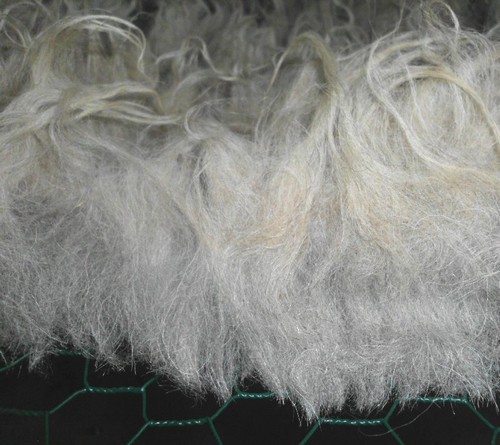
Another un-coated fleece housed properly. Both fleeces are raw, unwashed and just shorn.
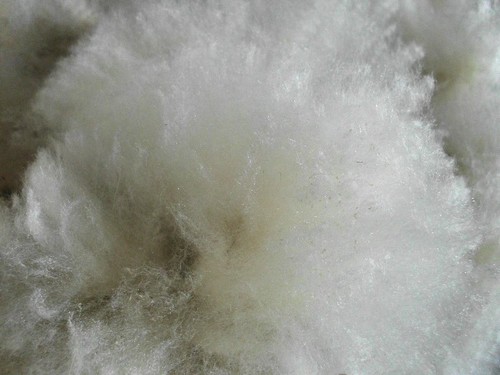
A clean, uncoated lamb.
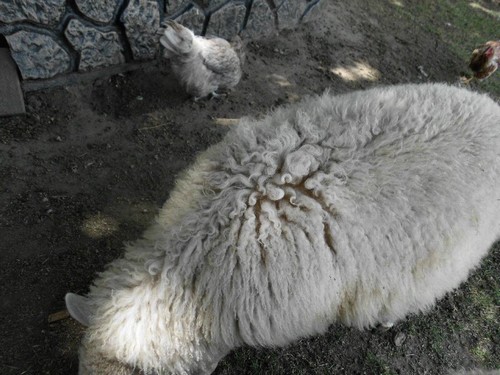
Angora goat on clean pasture ( Danielle)

By Gypsy, our resident homestead blogger from One Sky Ranch
Gypsy's Wanderings Homestead BlogDid you find this page helpful?
Sharing is a way of saying, "Thanks!"



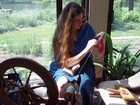
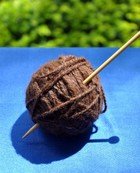
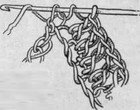
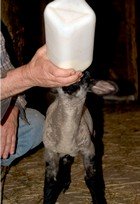
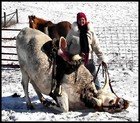
New! Comments
Do you have something of value to add? Leave me a comment in the box below.